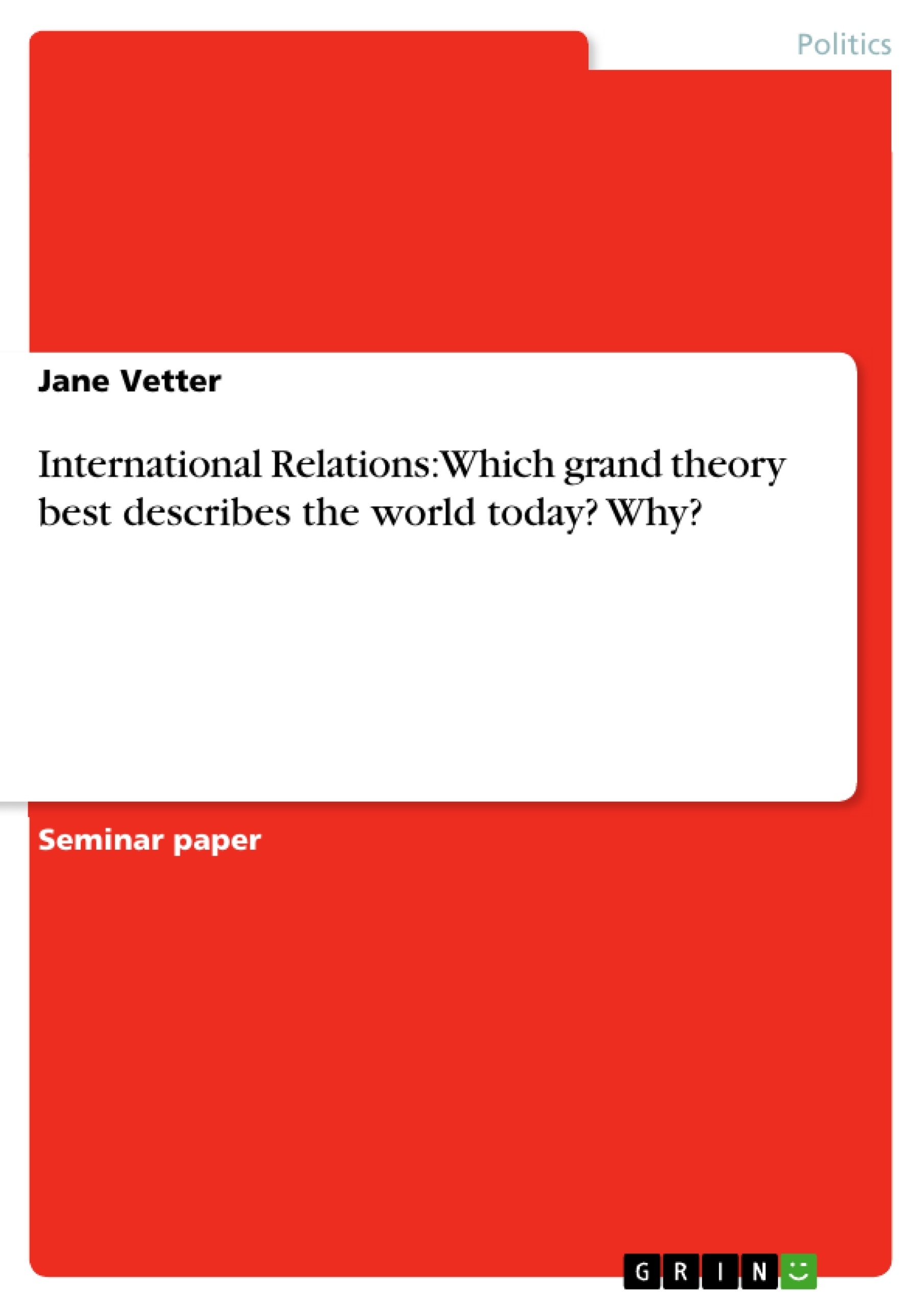In international relations, we find many different actors with distinctive interests and certain individual instruments to realize goals. Within the following paper, our question cannot necessarily be how important nation-states are in comparison with international organizations such as the United Nations, for example. Instead, we have to find the best match in regard to outlining and observing today's political world.
In the following, I will show that realism best describes our world today because of four striking reasons. First, realism is the easiest way to approach international politics and describing the world. Second, realism best applies to our daily individual lives and, therefore, dominates how we shape international relations. Third, the realist theory is our last resort when political circumstances get out of hand, and lives, sovereignty, and power are threatened. This is because we traditionally relied on realist approaches and, consequently, do not hesitate in further outlining our world with the help of realism since it makes us feel more secure in what we are doing. Fourth, realism marks today's hegemon, the United States, and, hence, today's world politics. This reasoning is not an attempt, however, to minimize other grand theories, liberalism and constructivism. International relations is a vast field and therefore must be complemented by alternative views in order to round out the picture and to arrive at valid and persuasive understandings of international politics.
Inhaltsverzeichnis (Table of Contents)
- International Relations: Which grand theory best describes the world today? Why?
- Realism as the Easiest Approach
- The Realist Mindset in Daily Life
- Realism as the Last Resort
- The United States as the Realist Hegemon
Zielsetzung und Themenschwerpunkte (Objectives and Key Themes)
This essay argues that realism best describes the world today due to its simplicity, its applicability to daily life, its effectiveness in times of crisis, and its influence on the actions of the United States, the current hegemon. The key themes explored include:- The role of realism in international relations
- The importance of nation-states in an anarchic system
- The relevance of the realist mindset in individual lives
- The influence of the United States as a hegemon
- The limitations of alternative theories such as liberalism and constructivism
Zusammenfassung der Kapitel (Chapter Summaries)
- The essay begins by introducing the concept of realism and its emphasis on nation-states and power dynamics in an anarchic system. It contrasts realism with liberalism and constructivism, highlighting the strengths and limitations of each theory.
- The author argues that realism is the easiest and most practical way to approach international politics, drawing parallels to the individual's pursuit of self-interest and power maximization in everyday life.
- The essay explores the role of realism as a last resort in times of crisis, citing examples such as the U.S. response to the September 11th attacks. It highlights how even in an increasingly interconnected world, states often revert to realist principles when security and sovereignty are threatened.
- The essay emphasizes the dominance of the United States as a realist hegemon, demonstrating how its actions and influence shape the global political landscape. It uses the example of the U.S. missile defense system in Eastern Europe to illustrate this point.
Schlüsselwörter (Keywords)
The central themes of this essay are realism, international relations, nation-states, power, anarchy, hegemony, the United States, liberalism, constructivism, and the individual. The essay focuses on the relevance of realism as a theoretical framework for understanding global politics in the 21st century.- Citar trabajo
- Jane Vetter (Autor), 2007, International Relations: Which grand theory best describes the world today? Why?, Múnich, GRIN Verlag, https://www.grin.com/document/116462



